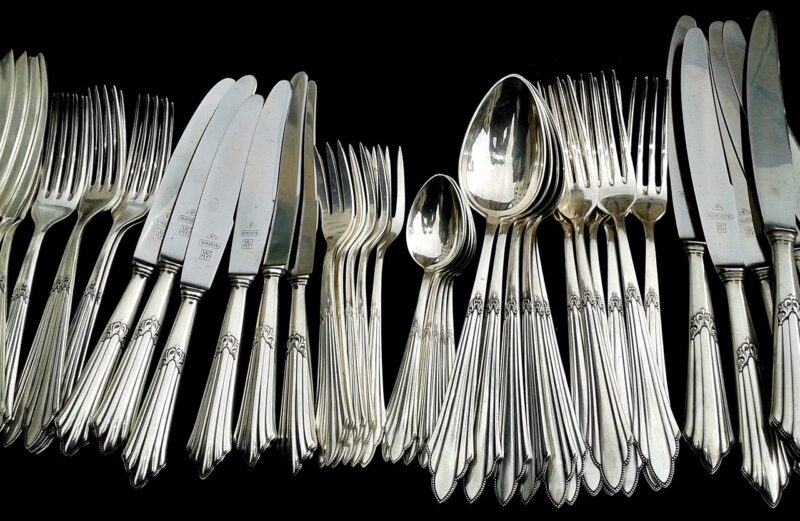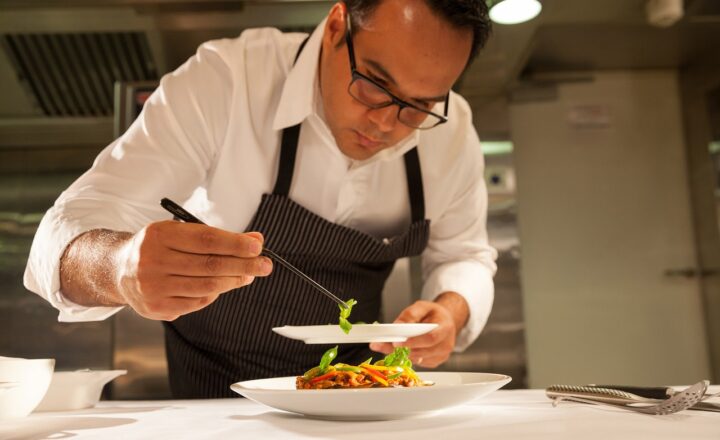How Silverware Became a Mark of Luxury and Fine Dining Throughout History
November 14, 2024

Silverware has long enjoyed a reputation as a symbol of luxury and elegance in dining settings around the world. From opulent banquets in royal courts to sophisticated dinner parties in modern homes, the use of silver cutlery has transcended mere functionality. It is intertwined with social status, tradition, and artistry. In this article, we’ll delve into the captivating journey of silverware through history, exploring its origins, evolution, and the reasons behind its esteemed position in the dining experience.
1. The Origins of Silverware
The history of silverware dates back to ancient civilizations. Evidence suggests that the use of silver for tools and utensils began around 3000 BC in the Middle East. The soft, malleable characteristics of silver made it an ideal material for crafting various objects, including those used in dining.
In ancient Rome, silver plating became very popular among the elite to display wealth. However, it was during the Middle Ages that silverware truly gained prominence with nobles and royalty utilizing it in their grand feasts. Silver was not only a practical choice but also served as a status symbol, showcasing the wealth and good taste of its owner.
2. The Rise of Silver as a Status Symbol
The use of silverware flourished in the 16th and 17th centuries, particularly in Europe. Wealthy families painstakingly crafted elaborate pieces that were often intricately designed, showcasing craftsmanship that would become characteristic of the age.
The concept of dining evolved during this time, transforming into a sumptuous event. Elaborate table settings featuring ornate silverware signaled not just the wealth of the host but also their social standing. Such festivities became the realm of those who were affluent, thereby making silverware a privileged possession.
Instinctively, social classes began to form around these dining customs. Silverware was considered essential for formal dining, and it set apart those who indulged in it from those who did not. The presence of silver on the table often indicated a higher status level and, directly tied to the principles of hospitality and generosity.
3. Craftsmanship: The Art of Silverware Making
The artistry involved in crafting silverware significantly contributed to its status. Skilled silversmiths emerged, and the techniques needed to create fine cutlery transformed into an art form. From engraving to ornate designs, certain pieces represented not just utility but were also works of art, often passed down through generations.
Different periods influenced the styles of silverware. The Baroque and Rococo periods, known for extravagant detail and intricate designs, saw silverware take on even greater ornamental qualities. This craftsmanship added to the allure of silverware, elevating it from mere utensils to coveted heirlooms.
Silverware collections often contained not only forks, knives, and spoons but also beautifully crafted bowls, trays, and serving dishes, enhancing the overall dining experience with elements of grandeur.
4. Silverware in Modern Fine Dining
As we move into the 20th and 21st centuries, silverware remains a hallmark of fine dining experiences. High-end restaurants and elite social events prioritize quality table settings that reflect sophistication and class. Silverware is still associated with exceptional dining experiences, serving as a reminder of its historic legacy.
However, trends change, and the preferences for materials have diversified. While many people still cherish traditional silverware, stainless steel has emerged as a popular alternative due to its durability and lower maintenance. Nevertheless, silver continues to be favored for formal occasions and events, often seen in bridal registries and commemorative gifts.
Silverware has also found its way onto the dessert table, with many home bakers using ornate silver dessert serving utensils to add an elegant touch to their creations.
5. The Cultural Significance of Silverware
Beyond pure aesthetics, silverware plays a crucial role in cultural practices and traditions in many communities. For instance, in some cultures, presenting silverware to newlyweds symbolizes prosperity and wealth.
Similarly, cultural events, like milestone celebrations, often call for silver service to signify respect for tradition. The use of silverware in these gatherings brings layers of meaning to everyday culinary practices, embedding historic significance into family and cultural legacies.
While the mere function of silverware involves eating, it transcends this utility to represent cultural values, familial connections, and the continuity of tradition. More than just cutlery, it embodies human history, reflecting societal values at different points in time.
6. Caring for Silverware: Maintenance and Preservation
To preserve the glamor and luster of silverware, proper care is essential. Over time, silver can tarnish if not adequately cleaned and stored. Regular polishing and storing in tarnish-resistant cloth can lengthen the life and maintain the beauty of these treasured items.
Families pass silverware down through generations, which heightens the emotional value associated with these items. Therefore, it becomes a family heirloom, preserving beautiful memories and stories that have been shared around dining tables.
7. Conclusion: The Enduring Legacy of Silverware
As we reflect on the story of silverware, it’s evident that its significance transcends mere functionality. From its roots in ancient societies to its enduring reputation today, silverware serves as a testament to human craftsmanship, social hierarchy, and cultural heritage.
Even amid changing dining preferences and styles, the allure of silverware remains a symbol of luxury and fine living. With its rich history, it continues to evoke elegance and formality, making it an integral part of dining experiences across cultures.
As you consider the dining experiences in your life, take a moment to appreciate the significant role silverware plays in our culinary traditions, connecting us through generations and elevating our dining moments into experiences rich with heritage and artistry.








